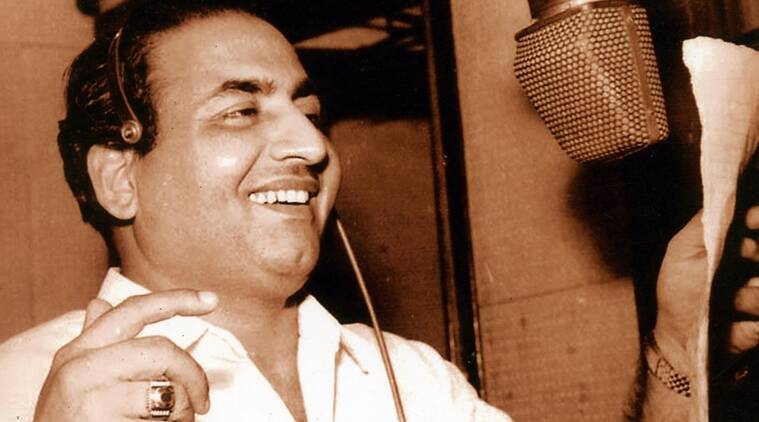India has produced a multitude of artists who single-handedly changed the landscape of their particular domain. Legendary singer Mohammed Rafi was one of them. He is credited with being the most versatile as well as an adaptive singer ever produced by Indian cinematic space.
Early days of Mohammed Rafi
Mohammed Rafi was born on 24th December 1924 in Kotla Sultan Singh, a village in present-day Amritsar. Among his half-a-dozen siblings, he was the second eldest of them. It is widely believed that Rafi’s passion for singing was inspired by his imitation of a fakir who went rounds in his village. When he was 11 years old, his family moved to Lahore in order to improve their economic condition.
Rafi learned music from a variety of artists which include Ustad Abdul Wahid Khan, Pandit Jiwan Lal Mattoo, and Firoze Nizami. His first public appearance came at the age of 13. His first love affair with cinema came at the age of 17 when in 1941, he was one of the singers of the song “Soniye Nee, Heeriye Nee” in the Punjabi movie Gul Baloch. Impressed by this, All India Radio Lahore invited him to sing for them.
Mumbai and further years
Later, in search of better opportunity, Rafi moved to Bombay (modern Mumbai) in 1944. Bombay turned out to be a game-changer for the legendary singers. Throughout the next 3 and half-decade, he went on to partner with various singers like Naushad Ali, Surya Dev Burman, Shankar-Jaikishan, Madan Mohan, O.P. Nayyar, Laxmikant-Pyarelal, Kalyanji Anandji, Asha Bhonsle, Manna Dey, Lata Mangeshkar, and many others.
Partnership with Naushad
His first big breakthrough came from his partnership with Naushad. Though, “Hindustan Ke Hum Hain” released in 1944 was the first song that Rafi sang for Naushad; the duo’s first song was the soundtrack for the movie Anmol Ghadi in 1946. Songs like “O duniya ke rakhwale” and “Man tarpat hari darshan ko aaj” were some of the landmarks in their partnership. Overall, Rafi sang a total of 149 songs with Naushad, 81 of which were solo while 68 of them were duets.
During the 1950s, Rafi emerged as one of those singers who could easily adapt to an actor’s voice and make the audience feel like it’s the actor who is actually singing the song. He was an expert in adapting to the voices of Guru Datt and Dev Anand.
Making of a legend and Shankar-Jaikishan
Though he was extremely adaptable and could mould himself according to demand, his most famous and vibrant partnership came with legendary pair of Shankar-Jikishan. This triplet combined produced a total of 349 songs, of which 216 were sung by Rafi alone. 3 out of Rafi’s total 6 film fare awards came from his partnership with this duet. “Teri Pyaari Pyaari Surat Ko”, “Bahaaron Phool Barsaao” and “Dil Ke Jharokhe Mein” were three songs that resulted in the Filmfare award for Mohammed Rafi.
A nationalist at the core who was famous all over the world
Rafi sang a total of more than 26,000 songs. His versatility made sure that he had his fan-following all over India. Other than singing in pure Hindi, he also sang in various languages which include Konkani, Assamese, Bhojpuri, Odia, Bengali, Marathi, Sindhi, Kannada, Gujarati, Tamil, Telugu, Magahi, Maithili. Moreover, he was in high demand in foreign countries as well. His mastery of English, Farsi, Arabic, Sinhala, Mauritian Creole, and Dutch played a key role in that.
Other than being a professional singer, he was a devout nationalist. When in 1947, his wife had refused to make India her home; Mohammed Rafi had no qualms in disturbing his personal life for nationalistic goals. He later married Bilquis Bano in India.
Unfortunately, at a relatively young age of 55, Rafi suffered a massive heart attack which led to his demise on 31 July 1980. He was buried at Juhu cemetery and according to estimations; more than 10,000 people attended his burial procession. The Indian government announced two-day mourning for his death. We at TFI, pay our homage to the great soul.
